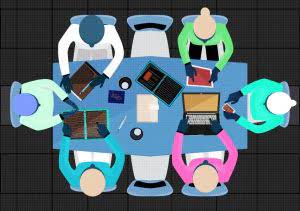Not only can drinking and drugs increase the effects of each substance, it can also trigger dangerous interactions. Currently, the MOE results point to risk management prioritization towards alcohol and tobacco rather than illicit drugs. The high MOE values of cannabis, which are in a low-risk range, suggest a strict legal regulatory approach rather than the current prohibition approach. Nevertheless, as previously stressed, our findings should not be interpreted that moderate alcohol consumption poses a higher risk to an individual and their close contacts than regular heroin use14.
Unfortunately, the outcomes for patients addicted to alcohol and drugs are poor. Drug and alcohol addiction has repercussions beyond health; it can destroy the family, result in job loss and lead to financial loss. Marijuana is the most frequently abused federally illicit drug in the United States. The prevalence of past-year non-medical marijuana use is 5-6 times greater than that of other illicit drugs like heroin, cocaine, oxycodone, and hydrocodone, at around 16% in 2021.
Related research and data
If you or someone you know is in need of help, check out our facility and detox programs to find the exact service you need. However, DTs only last a few days, and once they are over, https://ecosoberhouse.com/ you will not experience them again throughout your recovery. They are described as an immediate feeling of confusion and disorientation with heavy sweating and a fast heart rate.
- On the other end of the scale, THC or cannabis can be consistently found to have high MOE values, as well as amphetamine-type stimulants and benzodiazepines.
- Alcohol and socializing have gone hand in hand for centuries — so much so that it’s easy to forget alcohol is a drug.
- While there wasn’t much of a difference in risk between younger and older groups who drank moderately, younger people in the study had greater mortality risks than the older ones at high consumption levels.
- Use substance use disorder (SUD) or drug addiction instead of habit to avoid trivializing this medical condition.
- The CDC’s National Center for Health Statistics delivered some provisional data that was equally bleak.
- Many of the effects of drinking every day can be reversed through early intervention.
This may seem like a petty academic squabble, but it’s quite important as researchers and lawmakers try to advance more scientific approaches to drug policy. Finding the best method to evaluate the risks of drugs is much more complicated than assigning numeric rankings. Many experts will disagree between the similarities and differences between drug and alcohol addictions because both are forms of addiction. According to the National Institute on Alcohol Abuse and Alcoholism, alcohol causes 88,000 (62,000 men and 26,000 women) deaths every year. The National Institute on Alcohol Abuse and Alcoholism tells us alcohol shortened the lifespan of those 88,000 by 30 years.
Looking for Treatment?
The first is tobacco, and the second is poor diet and physical inactivity. Our second national overseer is the Centers for Disease Control (CDC). Specifically, the CDC’s National Center for Health Statistics, which provides no end of information regarding our country’s health and well-being. The paper also found a significant interaction between the age of study subjects and their mortality risk. While there wasn’t much of a difference in risk between younger and older groups who drank moderately, younger people in the study had greater mortality risks than the older ones at high consumption levels. The years of experience and knowledge they have acquired are compiled into our drug addiction blog.
We were unable to identify dose-response information for other endpoints of cannabis (e.g. mental health problems, chronic risk, or other cannabis-constituents besides THC). Similar to cannabis, the sensitivity analysis alcohol vs drugs for nicotine based on human data resulted in much lower MOE values. This again is based on a different endpoint (increase of blood pressure in this case, which is expected to be more sensitive than mortality).
JOIN OUR NEWSLETTER & LET AMERICAN TREATMENT NETWORK HELP YOU
Alcohol abuse links to more than 60 diseases, and abuse of this substance is more likely to adversely impact others besides the person using it. The only toxicological threshold available in the literature for all of the compounds under study was the LD50. The LD50 values taken from the ChemIDplus database of the US National Library of Medicine and from Shulgin24 are shown in table 1. Using the method of Gold et al.25, the LD50 values were extrapolated assuming linear behaviour (as no other information on dose-response is available) to BMDL10 values. The mean values of BMDL10 range from 2 mg/kg bodyweight (bw) for heroin and cocaine up to 531 mg/kg bw for ethanol. Substance use disorders are chronic, treatable medical conditions from which people can recover.

So heroin would be at or near the top for mortality, alcohol would be at or near the top for cause of violent crime, and tobacco would be at the top for long-term health risks. The idea is lawmakers could look at this model to help decide on an individual basis which policies are better for each drug. Marijuana’s primary psychoactive compound, ∆9-THC, acts as an agonist at the CB1 cannabinoid receptor, producing rewarding effects like euphoria and relaxation.
If you have a medical emergency, call your doctor or 911 immediately. Again, medical supervision during detox is the safest way to do it since it provides the best care at the times a person needs it most. DTs usually happen a few days after a person has stopped drinking, and the symptoms occur very rapidly.
- The JAMA study didn’t go as far as the Lancet article in linking low levels of drinking to mortality risk.
- If you have a medical emergency, call your doctor or 911 immediately.
- Over time, you may find yourself searching for excuses to celebrate or beginning to drink more outside these other events because your body craves alcohol.
- No one would dare offer me meth or cocaine (well, this is Los Angeles, so maybe cocaine).
Drug overdose deaths rose nearly 30% in 2020 to 93,000, according to preliminary statistics released in July by the Centers for Disease Control and Prevention. America has a drinking problem, but our nation’s overdose crisis has shifted attention away from our national hangover. “There’s always choices,” Keith Humphreys, a drug policy expert at Stanford University, explained. Drug experts broadly agree that individuals and society would arguably be better off if marijuana became the most accepted recreational intoxicant of choice instead of alcohol.
Nevertheless, using graphical approaches (Figs. 1–3) the results for all drugs under study can be quickly compared. On the other hand, this may be an advantage, as we did not try to establish a single value “to be written in stone”. The utility of “single figure index harm rankings” has also been questioned in general62. Use substance use disorder (SUD) or drug addiction instead of habit to avoid trivializing this medical condition. Addiction is not a formal diagnosis, and the term is used in many ways.


